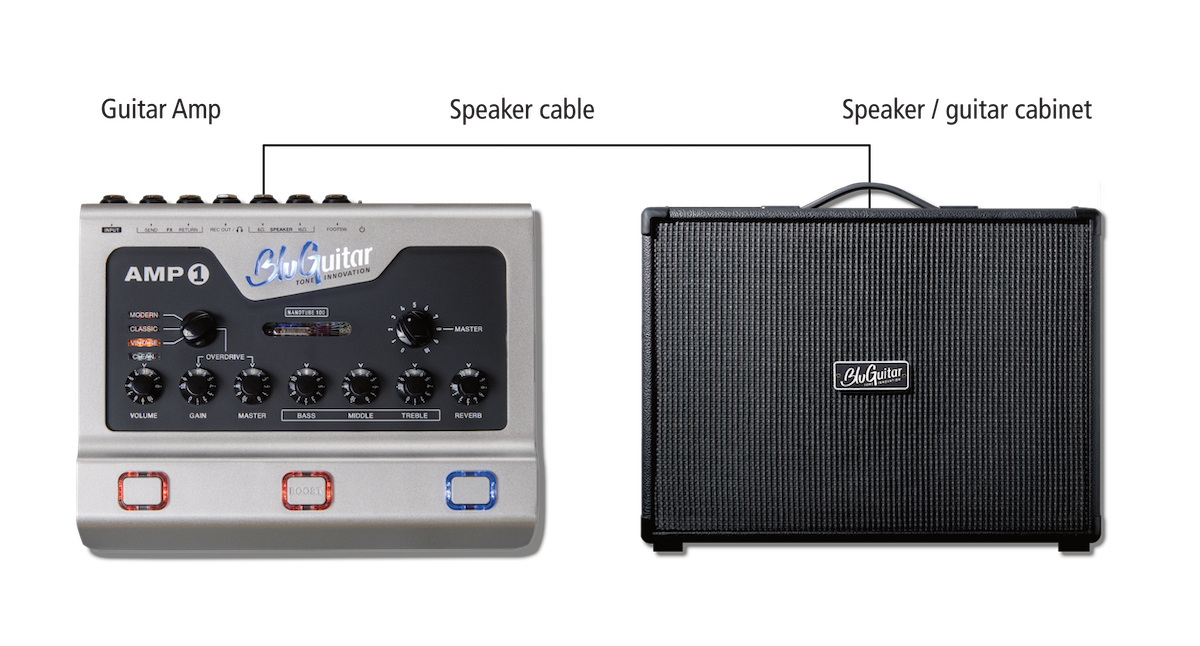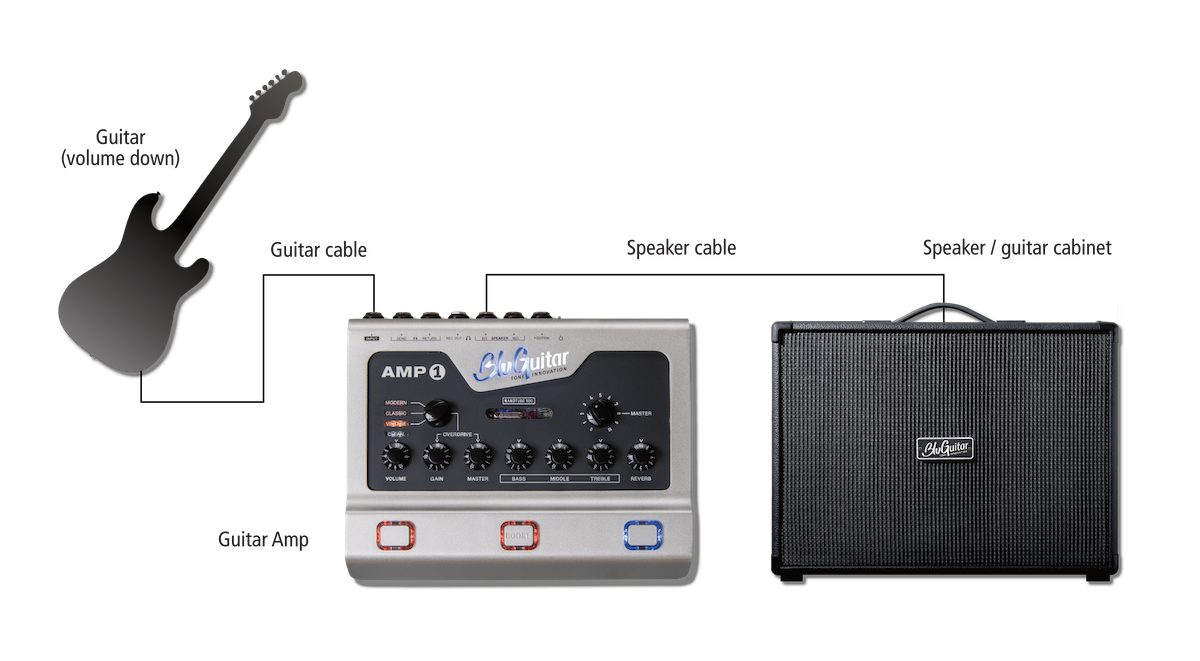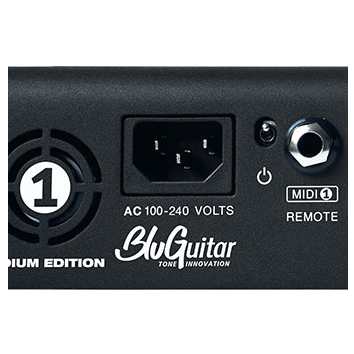Locating (and eliminating) noise in the AMP1
Locate noise
Noise such as humming, beeping, feedback, etc., can have many causes when it comes to guitar amplifiers. The source of the noise can be identified in the following ways:
- First remove all effects (pre-switch effects and loop-in effects) from the signal path, pull the guitar cable out from the input of the AMP1, connect the loudspeakers and switch on the noise gate. It should be quiet now.

- So if it stays quiet here, we go directly to the next check step. If there is already noise or problems at this point, they are most likely related to the speaker cable or the speaker. A good way to check this is to compare the signal at the SPEAKER OUTs with the REC OUT signal. If the REC OUT signal is clean, but the SPEAKER OUT signal is not, the AMP1 is not the cause of the noise (as you can read here, the REC OUT is located behind the SPEAKER OUTs - noise that is only audible at the SPEAKER OUTs must therefore have something to do with the peripheral equipment connected to the SPEAKER OUTs).
- Turn off the noise gate. What you hear now are the noises of the preamp. That the overdrive channels hiss is completely normal and is in the nature of things. The more gain, the higher the noise level.
If you are facing a crackling, sizzling noise, however, this can be caused by neon lights or by a running washing machine, vacuum cleaner or hairdryer in the same building. The remedy in this case can be a change of the power outlet, provided that it is connected to a different circuit.
- Next, connect a guitar to the amp's input with a guitar cable and turn the guitar's volume all the way down. If now hum occurs, it's coming from the cable - or the wiring in the guitar is wrong.

- Then turn up the volume of the guitar and you can hear the noises that the guitar (pickups, etc.) are making. Above all, feedback often occurs between the guitar pickups and the loudspeaker. Microphonic pickups can be the cause of this. If this is the case, the feedback will be less if you increase the distance between the pickups and the speaker, i.e. if you move the guitar away from the speaker cab. Likewise, the feedback should decrease when you turn down the treble pot on the guitar.
- Is the noise thus far has not occurred, all effect devices should be brought back into the signal chain gradually to identify the source of the noise.
- The last point to consider is a missing or poor electrical grounding as the cause of the noise. The AMP1, like any other guitar amp, must always be properly grounded. Missing grounding is dangerous! Please make sure that the correct power cable is used. Sometimes using a different outlet or circuit will help.
Good to know - special cases
In addition to the general cases listed above, there are also a few special cases that also fall into the category of "interfering noises" and for which we have further information for you:
Special case: Hum in the cab when connected to the mains

If the AMP1 is connected to the power supply via the standard power cable and to a loudspeaker cabinet via a speaker cable, there is a quiet but audible hum in the cabinet itself, even when the AMP1 is switched off. This is perfectly normal.
The mains switch of the AMP1 is located in the secondary circuit. As a result, when the amp is switched off - as with many modern devices - there is no proper disconnection from the mains. Strictly speaking, the AMP1 is then on standby. The transformer therefore creates its magnetic field even when it is switched off, which then spreads directly into the speaker and becomes audible. Incidentally, a similar phenomenon occurs with many other tube amps.
If this bothers you, you should use a switchable power strip with which you can completely disconnect the device from the mains by switching it off when not in use.
Special case: Noise in combination with the Line6 HX Effects
We have written a separate article for this special case.
DeleteSpecial case: "cross-talk" phenomenon
If the Clean Channel of the AMP1 Mercury Edition is turned down very far and the overdrive gain is turned up very far, a slight cross-fade of the overdrive into the Clean Channel can be heard. It becomes all the more inconspicuous and disappears completely the louder the Clean Channel is and the less gain is turned up on the overdrive channels.
![]()
This phenomenon is normal with the AMP1 Mercury Edition and cannot be avoided due to the layout of the circuit board. Live, this background noise is only perceptible – if at all – with an extreme constellation of clean volume and overdrive gain (see above: clean volume very quiet and overdrive gain and overdrive master turned up full).
A workaround in the studio is to dial back the overdrive gain when using the Clean Channel.
However, there are a few amps where this fade is so loud that it is annoying. The remedy for these devices is to move the CLEAN TONE Custom Control knob on the side of the amp once to the left and once to the right. This significantly reduces the volume of the cross-fading overdrive signal.
More reasons for clipping on the Clean Channel
Here are other reasons why your AMP1's clean channel might be clipping:
Distortion on the Clean Channel
Special case: Hum and noise on the Clean channel
If the AMP1 developed a hum and noisy hiss on the Clean channel (regardless of whether BOOST or/and REVERB are activated), the Custom Control Tone potentiometer for the CLEAN channel may have no contact and may be only connected to the next stage via the 2MΩ resistors. This is what is causing the noise.
To test this, please turn the Custom Control pot all the way to the left and all the way to the right a few times. If it is indeed this error, this measure will fix the problem.
Delete